The majority of older New England homes — anywhere from 60-70% — likely contain asbestos pipe insulation, which was commonly used in building materials because it’s strong, durable, and fire-resistant. The United States Environmental Protection Agency (EPA) and the U.S. Consumer Product Safety Commission (CPSC) have since banned several asbestos products, but if your home was built prior to the 1980s, you may have asbestos in your pipe insulation.
If you aren’t sure whether you have asbestos, we recommend squeezing an area of the pipe insulation that isn’t damaged. There’s a distinct feel to typical fiberglass insulation, which doesn’t contain asbestos.
The other two types of insulation typically found in homes, both of which contain asbestos, include:
- Air cell (or corrugated), which is a type of gray-colored insulation that contains air channels similar to cardboard.
- Magnesium insulation, which is a hard-packed material that you can’t squeeze.
It’s also important to note that you could have fiberglass insulation on the long pipes while only the elbows test positive for asbestos insulation.
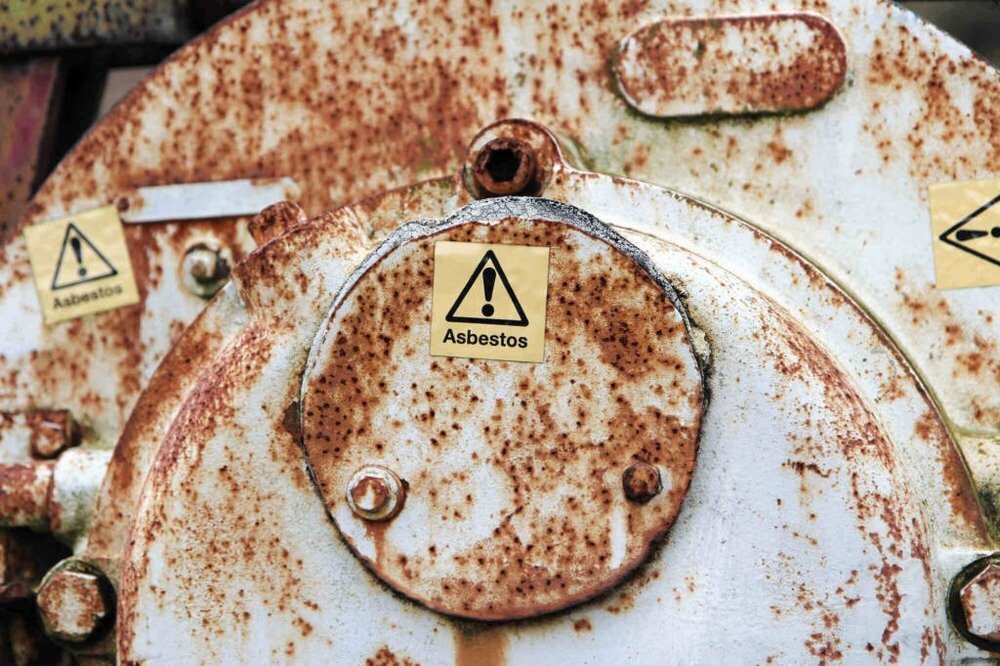
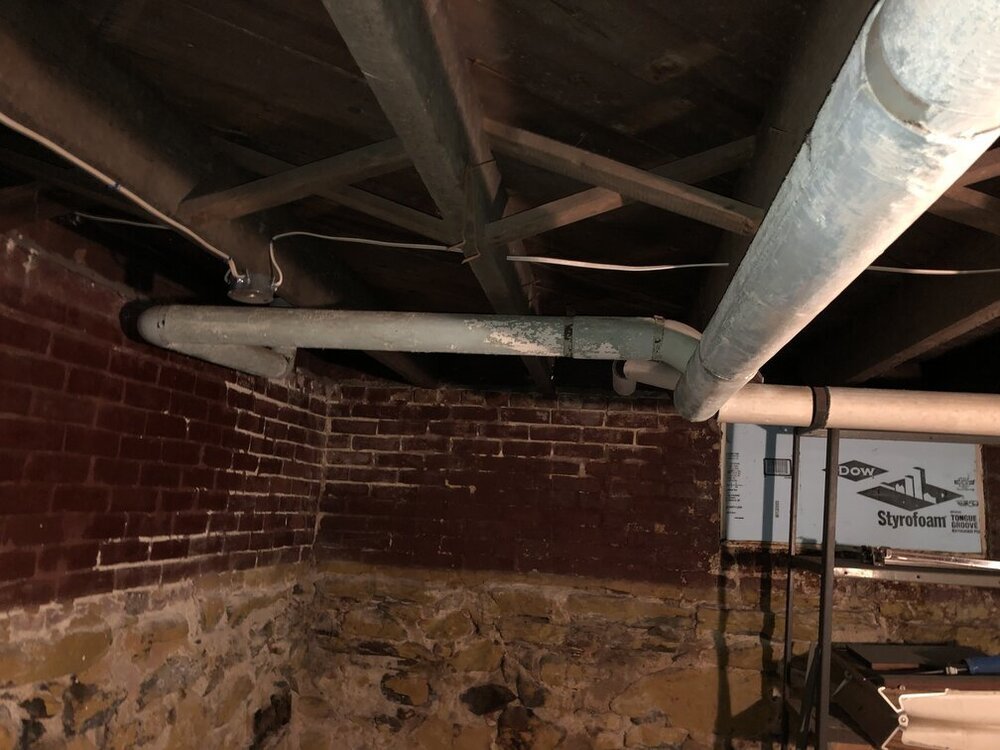
Do You Need to Remove Asbestos Pipe Insulation?
Similar to every other type of asbestos, you don’t have to remove asbestos unless it’s in a condition that’s friable or hazardous.
Friable asbestos is a loose matrix that allows dust and particles to easily be released into the air with simple hand pressure. Special care should be taken when dealing with friable material. Non-friable material cannot become friable unless it is sanded, cut, pulverized, or abraded in any manner. Non-friable material, when undisturbed, does not pose a health risk as long as it remains in its current state.
You may want to remove the asbestos insulation, however, if the pipes are in a high-impact area — in other words, if there’s a decent chance you could hit your head on them or knock into the pipes with an elbow.
If you accidentally take a small chunk out of your pipe insulation and it’s in otherwise good shape, you can repair asbestos pipe insulation with wet wrap, which is a plaster of Paris-type material.
Please do not use electrical tape, masking tape, or any other type of tape to repair damaged asbestos insulation. This can cause further damage to the area when we pull off the tape, resulting in additional costs.
What are the Health Risks of Asbestos on Your Pipes?
The EPA reports that asbestos can cause such serious health problems such as lung cancer, mesothelioma, and asbestosis.
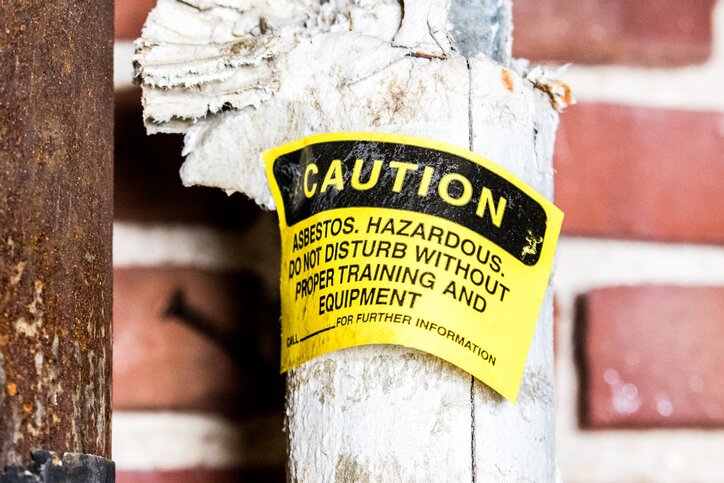
How to Remove Asbestos Pipe Insulation
Since asbestos pipe insulation is considered a friable material, we would need to build a full containment area for proper removal. This includes hanging two sheets of 6 mil poly and two sheets of regular poly. We will also cover critical barriers, such as windows, doors, and HVAC openings that are not being used.
In the state of New Hampshire, a full containment is required, in addition to a glove bag, which is a 4-foot section of bag that we wrap around the pipe to effectively and safely remove the asbestos insulation. We will also wet the asbestos using a mixture of water and surfactant with hoses and pump sprays since there can be no dust in the work area.
Here is a general overview of what you can expect with our asbestos removal process:
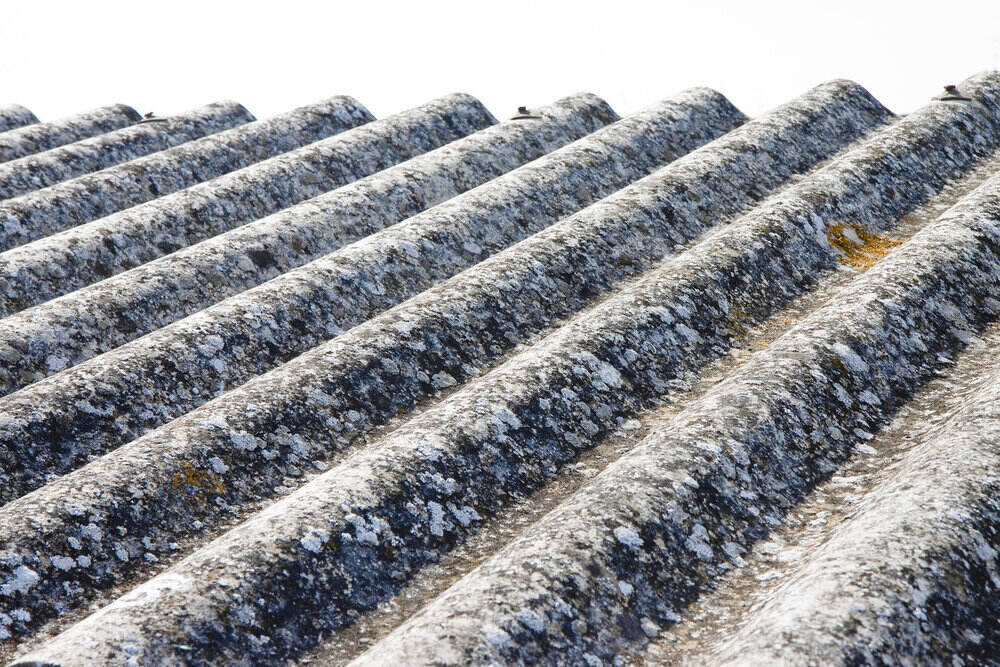
Asbestos Removal Services
We offer a variety of asbestos removal services, including:
- Asbestos abatement
- Asbestos insulation removal
- Asbestos roofing removal
- Asbestos pipe wrap removal
- Asbestos floor tile removal
- Asbestos popcorn ceiling removal
- Asbestos cement sheet removal
- Vermiculite insulation removal
- Asbestos boiler flue removal
Locations
Headquarters:
629 Calef Highway (Route 125)
Epping, NH 03042
10 Spencer Street
Stoneham, MA 02180
680 Stroudwater Street
Westbrook, ME 04092
Asbestos Removal Service Areas: NH, MA, and ME
EnviroVantage provides residential asbestos removal services in New Hampshire, Massachusetts, and Maine. We also offer commercial and industrial asbestos abatement. Please call 1-800-640-5323 for more information or to get a quote.
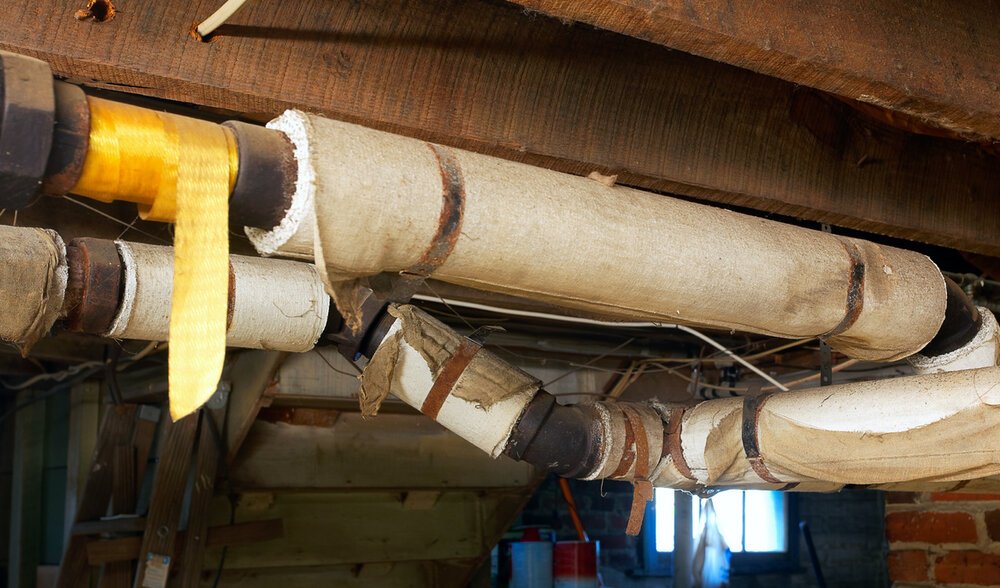
Asbestos Pipe Wrap Removal Cost
There are many factors that will affect asbestos removal cost, including:
- Location of asbestos within the home or structure
- Amount and condition of the asbestos
- Geographic location of the job itself
The average asbestos pipe wrap removal cost for a homeowner is anywhere from $2,500 to $3,000 for asbestos pipe removal in the basement, but it’s important to remember that every project is different, and the cost could vary.
Asbestos Pipe Removal Certifications and Training
All of our asbestos workers undergo intensive training and must pass exams and continuing education courses. Here’s a list of our asbestos-related state certifications:
- CT Asbestos Contractor
- MA Asbestos Contractor
- MA Home Improvement Contractor
- MD Asbestos Contractor
- ME Asbestos Abatement Contractor
- NH Asbestos Abatement Entity
- NH Asbestos Disp. Site Contractor
- NY Asbestos Handling License
- PA Asbestos Contractor
- RI Contractor Registration
- RI Asbestos Abatement Contractor
- VT Asbestos Abatement Entity
We’re also associated with the following associations:
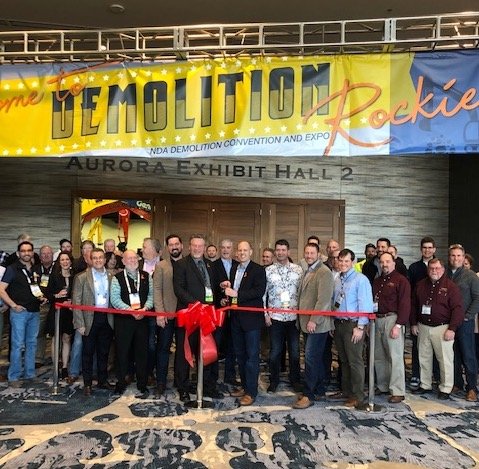

Why EnviroVantage?
We are an established, highly trusted demolition, environmental, and indoor air quality contractor with over 35 of years of experience. Our trained, expert technicians leverage leading-edge equipment and technology while adhering to industry best practices to deliver safe, high-quality services to our clients on job sites every day.